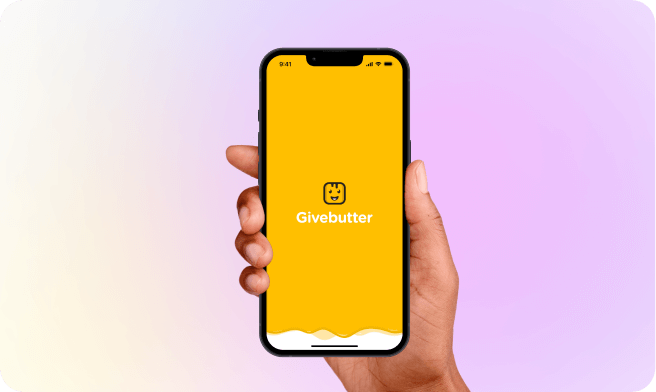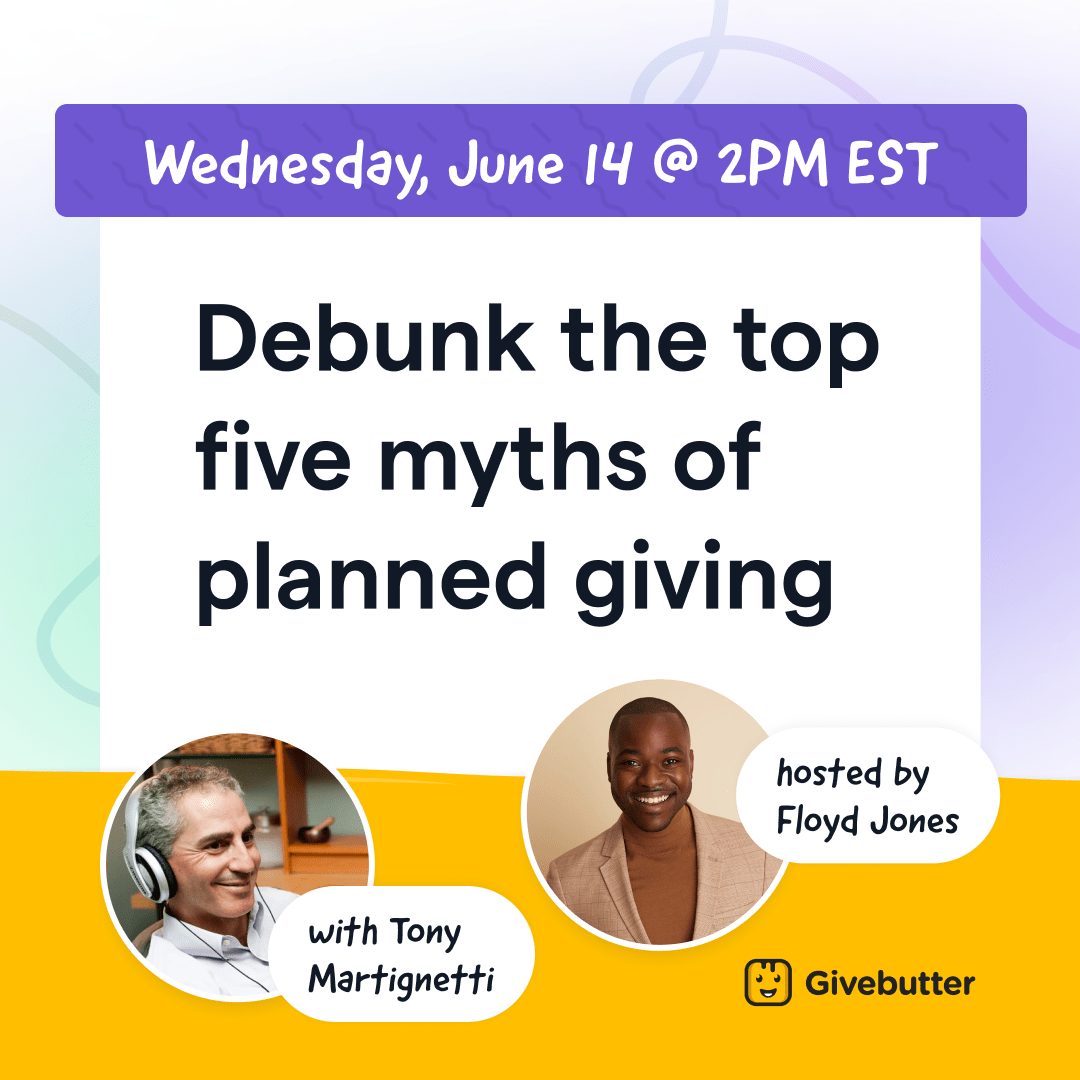Table of contents
Table of contents
With more accounts and greater nonprofit contributions than ever before, donor-advised funds (DAFs) are on the rise and catching the eye of organizations eager to engage DAF donors. We’ll discuss exactly who DAF donors are and share six ideas for cultivating relationships with this growing group of nonprofit supporters, including how to:
- Make it easy for DAF donors to give
- Reach out to DAF donors in a variety of ways
- Encourage DAF donors to give complex assets
- Solicit DAF donors for immediate needs
- Recommend recurring donations
- Thank DAF donors, not just sponsoring organizations
Who are DAF Donors?
Nonprofits interested in creating a DAF fundraising strategy can start by taking a look at who DAF donors are and what drives them.
The first thing to know is that most DAF donors are strong nonprofit supporters. They are changemakers, eager to contribute to good causes, but they may be more discerning with their contributions. DAF donors don’t have to grant the majority of their DAF funds until they’re ready. That said, when they do give, the size of their gifts tend to be larger than a typical one-off donation.
Another thing to understand about DAF donors is that they often have significant funds to contribute, but they aren’t necessarily Scrooge McDuck-level wealthy. Nonprofits may have an opportunity to begin with their existing donors to find those with DAF accounts as well as reach new supporters who may be interested in contributing to their cause in this way.
Why do people open donor-advised funds? 🔑
It’s no coincidence that DAF grant funds increased by $10 billion in 2021. DAF donors enjoy many benefits, including time to evaluate where and how they contribute to charities. A donor, or group of donors, might also go the DAF route in order to:
- Enjoy immediate tax breaks
- Grow their nonprofit contributions through investment
- Facilitate planned giving now and well into the future
- Avoid the headache and cost that comes with starting a private foundation
- Give anonymously
What are the characteristics of a typical DAF donor? 👤
People with DAF accounts tend to share these characteristics, though times are changing as more and more people are choosing to open a DAF account:
- Close to retirement: The average age of a DAF donor is 65.
- Higher-income, but not extremely wealthy: According to WealthEngine, most DAF donors have less than $25,000 in their accounts at a given time.
- Already engaged in nonprofit communities: 79% of DAF donors volunteer their time as well as their money.
How do DAF donors typically give? 💌
At a lot of DAF sponsoring organizations, donors must contribute a minimum of $5,000 to $25,000 to their account at a time. However, many new sponsors are encouraging donors of all means to create DAFs and contribute any amount they can—and that doesn’t just include cash.
Last year, for example, 61% of DAF contributions to Schwab Charitable were non-cash assets like publicly traded securities, restricted stocks, and other private business interests.
The size of these accounts and the variety of cash and non-cash assets help explain why many DAF donors have the following shared attributes.
⚡ They don’t give on a whim—but can mobilize quickly: DAF accounts give donors time to choose where their money ends up. Since donors expect to provide significant amounts, they research and connect with nonprofits on several levels before donating. Likewise, donors can choose to donate thousands of dollars they’ve contributed over time immediately to disaster or relief funds as crises arise.
🎁 DAF grants are typically larger than other donations: Donors with DAF accounts have access to more money at any given time than most donors. While most private foundations hold onto their funds, DAF donors will regularly empty their accounts within a year—and this results in a lot of charitable donations since the average individual DAF account size is around $182K!
🚀 DAF donors are more likely to give major gifts or planned giving: DAF donors are more interested in building a legacy and will often name family members as successors of their DAF account. Nonprofits that receive grants from these donors have a greater chance of receiving continued funding through generations.
6 practical tips for engaging DAF donors
The growth of donor-advised funds means that more changemakers are looking for ways to use their money and other investments to give back. The following ideas can help nonprofits find more DAF donors and grow lasting relationships for sustainable giving.
Tip #1: Make it easy for DAF donors to give 🌟
<span id="tip1"></span>When you make it a no-brainer for DAF donors to find and contribute to your organization, you’ll reap the benefits. Several external tools can help organizations reach DAF donors, but there are also a number of things nonprofits can do internally to set themselves up for success right from the start.
💪 Put it into action:
- Accept DAF donations as a payment method everywhere you receive donations, including on your website, fundraising pages, and events.
- Make sure your DAF-receiving capabilities, as well as your tax-exempt status, appears on all donor-facing materials like your website, donation pages, and social media profiles.
- Update your profiles on GuideStar, Charity Navigator, Charity Watch, and any other relevant sites that donors and corporate sponsors may check to make sure you’re legit.
Tip #2: Reach out to DAF donors in a variety of ways 👋
<span id="tip2"></span>Donors won’t know that you can accept DAF donations unless you tell them directly. Think about all the ways that you already proactively communicate with your supporters—both current and prospective donors—and decide if and how you’ll share about DAFs through each channel.
Start by educating your staff and board members about donor-advised funds, so they can take part in your DAF outreach strategy, too.
💪 Put it into action:
- Email: Create a brief explainer for donors on how your nonprofit now accepts DAF grants (Pssst! We've created an email template you can use below!).
- Social media: Consider posting about DAFs leading up to your next fundraising campaign or major event.
- In-person: At events or in one-on-one conversations with your supporters, make sure to bring up DAFs, and offer educational resources like flyers, brochures, and even seminars with experts.
- Direct outreach: It doesn’t hurt to reach out to donors as they hit major birthdays (40s, 50s, and 60s) with information about the benefits of DAFs and planned giving.
Tip #3: Encourage DAF donors to give complex assets 🤓
<span id="tip3"></span>Many donors have complex assets—stocks, real-estate, even cryptocurrency—that they may not realize that they can give to charity (or how they would even go about doing that). Most nonprofits are in the same boat with regard to accepting these kinds of gifts.
The lack of knowledge and inability to accept donations can lead your organization to miss out on some substantial gifts to fuel your mission.
DAF funds provide an excellent way for donors and nonprofits to put these gifts to use. DAF sponsors like Fidelity and Schwab can accept any kind of assets and use them to fund the donors’ favorite charities. By sharing information on how donors can do this and pointing them toward sponsoring organizations, you’ll become a helpful resource for these donors and encourage them to support you in the future.
💪 Put it into action: As you inform donors about how DAF funds can help them use their complex assets, you can also educate them on how planned giving can benefit them and make an impact on your nonprofit.
Tip #4: Solicit DAF donors for immediate needs ⚡
<span id="tip4"></span>Because DAF funds are immediately available, many DAF donors give to charity when donations are urgently needed. Fidelity Charitable, for example, saw $128 million from its DAF funds go directly toward charities responding to the Ukrainian humanitarian crisis in 2022.
💪 Put it into action: Regardless of your mission, reaching out to DAF donors when your organization urgently needs funding is a good way to show DAF donors that they can have a huge impact with their contributions.
Tip #5: Recommend recurring donations 🔁
<span id="tip5"></span>Recurring donations are a huge convenience for donors and an essential tool for nonprofits seeking financial sustainability. Donors interested in giving recurring gifts with their DAF funds are usually required to give $50 or more each month, and they have the option to set an end date or leave it open.
💪 Put it into action: Make sure that recurring donations are an automatic option when DAF donors give, and add information about DAFs to any recurring donation appeals. If you haven’t already, you should also begin to build relationships with donors who have a greater ability to give major gifts.
Tip #6: Thank DAF donors, not just sponsoring organizations 💛
<span id="tip6"></span>Unfortunately, many nonprofits make the mistake of acknowledging the sponsoring organization instead of the individual DAF donor. Some DAF donors give anonymously, but for the majority that don’t, you should do your due diligence to send a personal thank you, setting yourself up for effective donor stewardship.
💪 Put it into action: Nonprofits can take several steps to effectively collect donor information and thank the right person. One way is to encourage DAF donors to make DAF donations directly to your organization or fundraising platform, which gives you their contact information while still letting them use DAF funds held by their sponsor.
If grants are made through the sponsoring organization, make sure to give hard credit to the sponsor and soft credit to the donor for each contribution in your database. It may be helpful to keep a list of popular DAF sponsors to make it easier for you to track.
Raise more for your mission and reach DAF donors with Givebutter
Donor-advised fund giving is an exciting opportunity for both donors and nonprofits, and amidst this DAF explosion, it’s a perfect time to start reaching out and engaging these donors.
It’s also now easier than ever for organizations to connect with DAF donors thanks to Givebutter’s native integration with Chariot. Nonprofits can accept DAF donations directly on any Givebutter donation form, fundraising page, embeddable website widgets, and events—all for free! 🎉
Sign up for your free account and set up to start offering DAF as a payment option for your donors today!
<span id="template"></span>
BONUS: Free DAF donor outreach email template
Subject line: You can make a huge difference 💛
Dear [DONOR NAME],
You are an essential part of our community here at [NONPROFIT NAME], and I’m writing to let you know about a new opportunity for our supporters to contribute to our mission more easily through donor-advised funds (DAFs).
Without supporters like you, we could never [NONPROFIT MISSION]. In the past, you’ve shown interest in [NONPROFIT PROGRAM], and your gifts have helped us [PROGRAM SUCCESS], [PROGRAM SUCCESS], and [PROGRAM SUCCESS].
Right now we are raising funds for [NONPROFIT PROGRAM DETAILS & EXPECTED IMPACT], and we are so excited to share that donating through your DAF is now just as easy as paying with a credit card or Venmo.
Have an existing donor-advised fund? Please consider making a contribution from your DAF directly on our Givebutter campaign page (just select DAF as your payment option!): [LINK TO GIVEBUTTER DONATION FORM]
Interested in learning more about DAFs? Check out Givebutter’s guide to DAFs to see what it’s all about and how it can benefit you and support our organization. Please reach out if you have any questions at all.
Thank you for your ongoing support.
Sincerely,
[NAME], [TITLE]
[EMAIL]
[PHONE]





.png)




%20(1).png)






.png)






.svg)
.svg)
